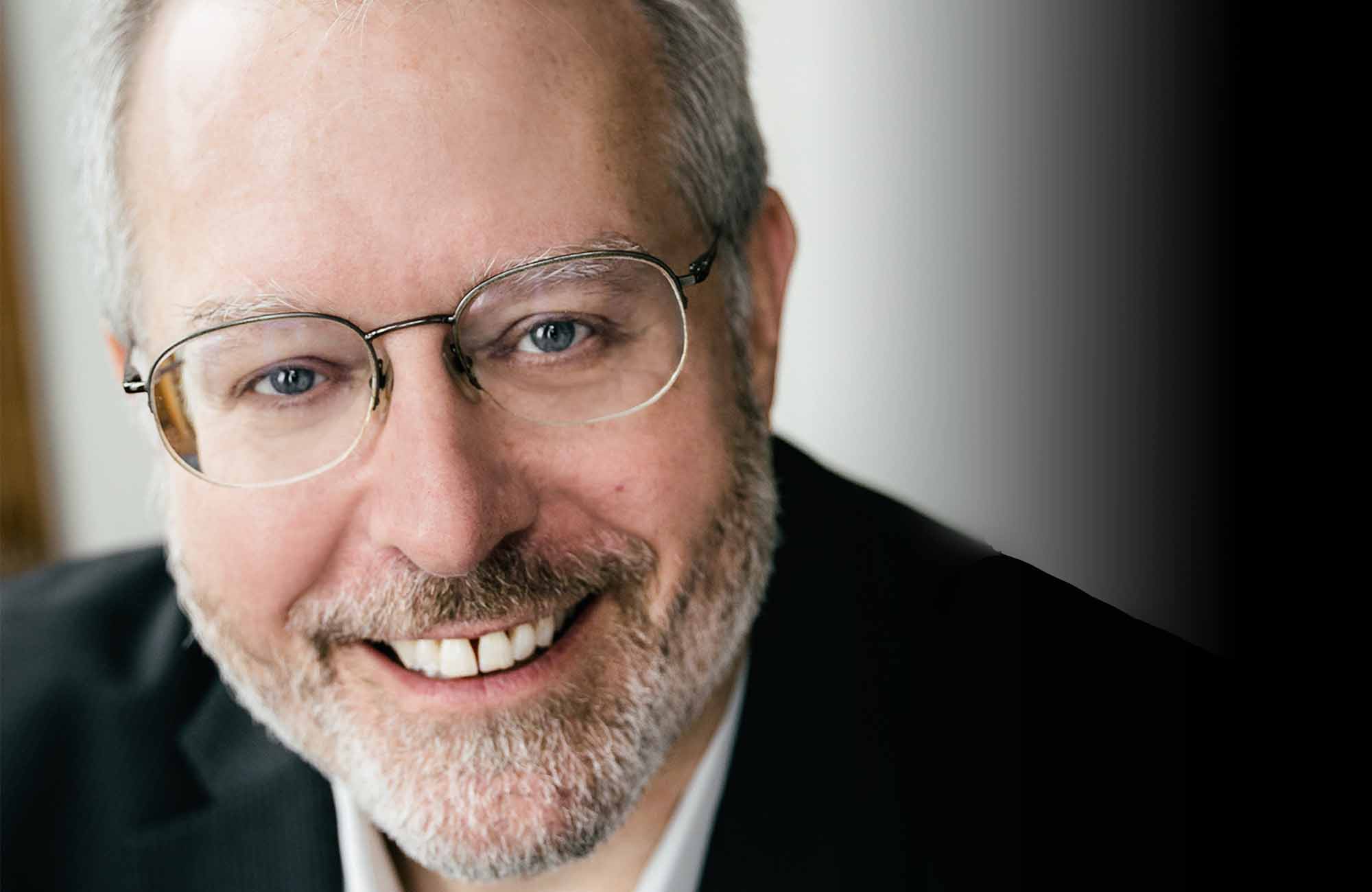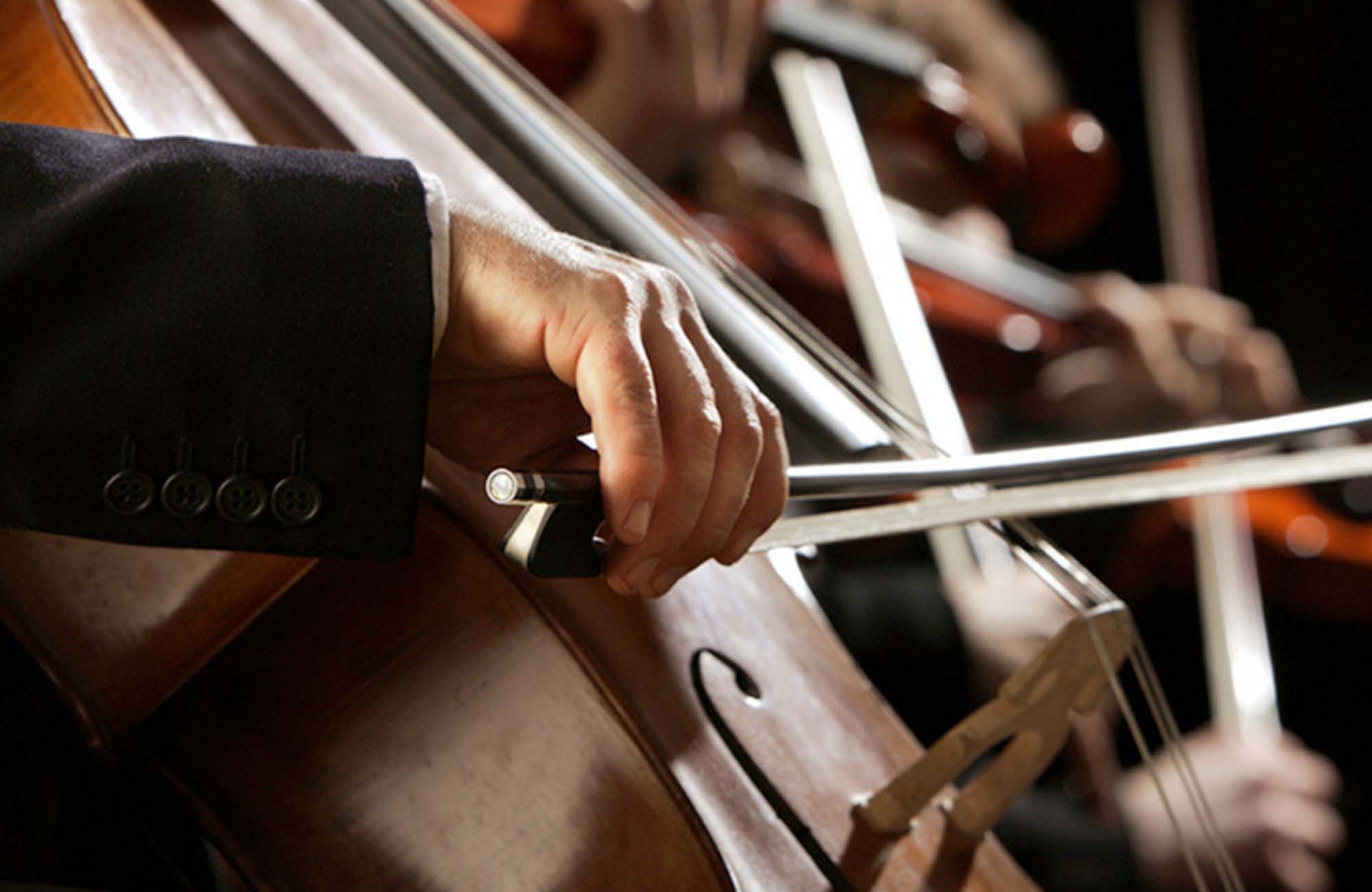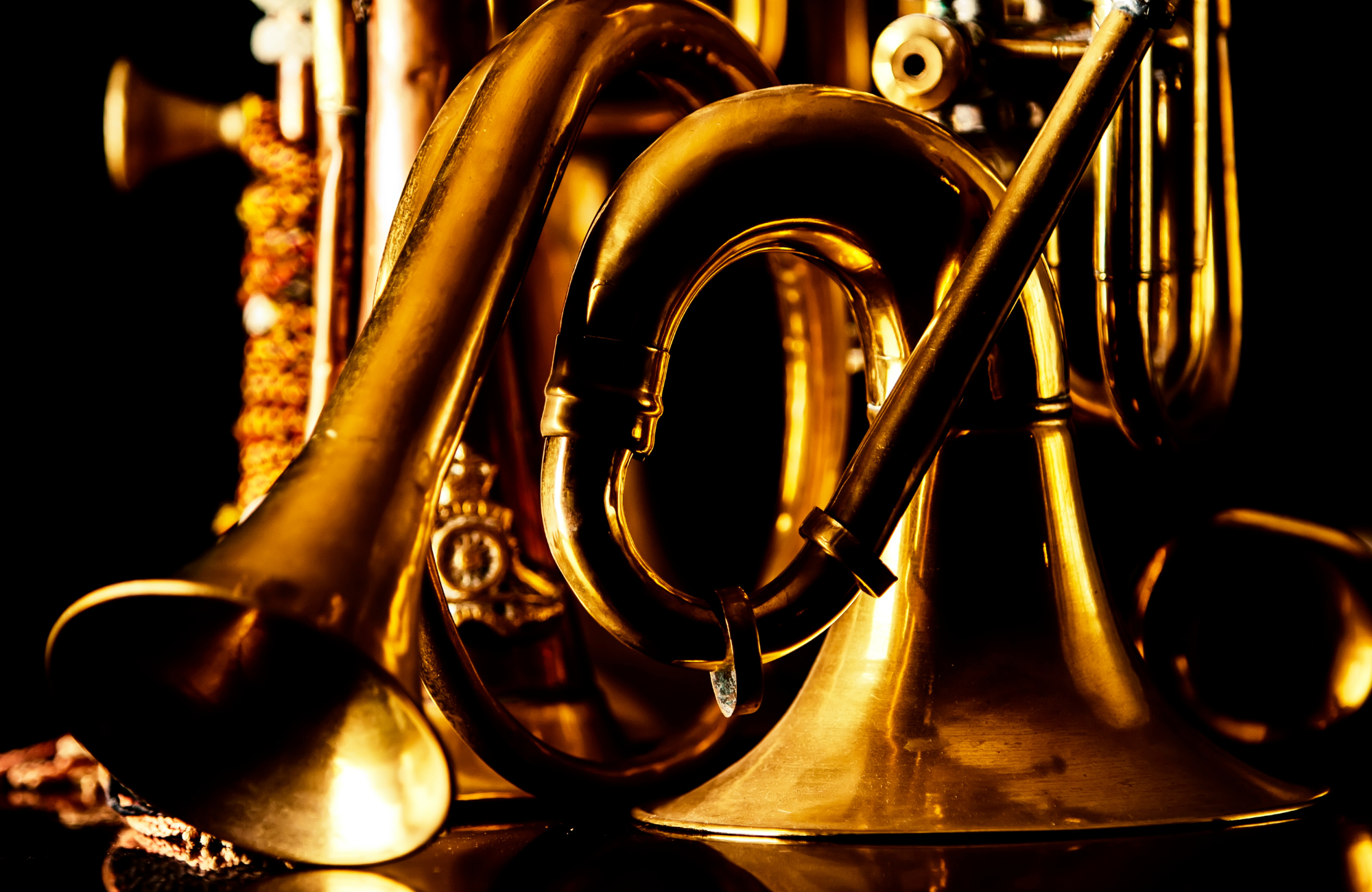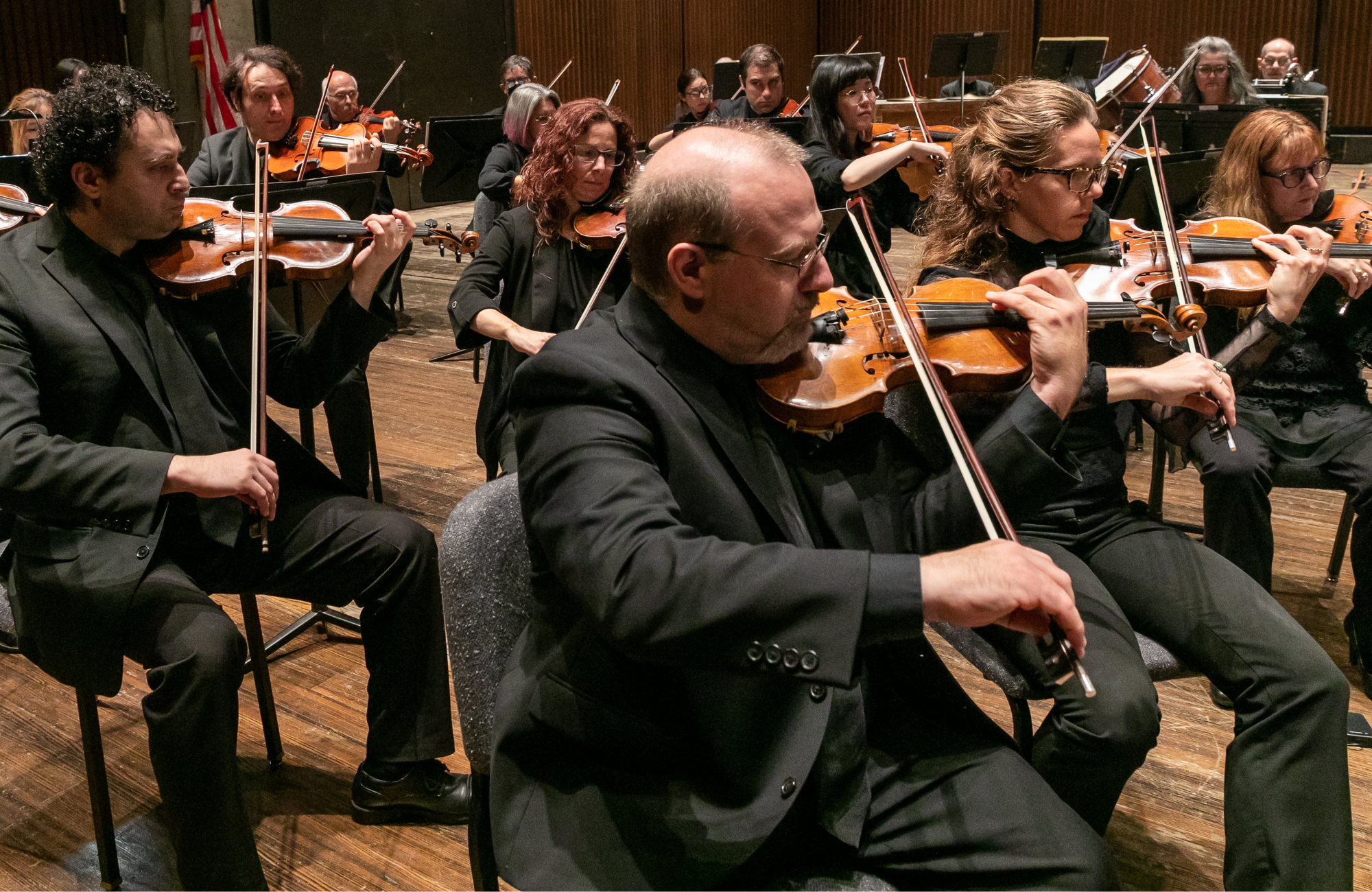PROGRAM
BACH: Brandenburg Concerto No. 3 ![]()
MENDELSSOHN: Piano Concerto No. 1 ![]()
FARRENC: Symphony No. 3 ![]()
PROGRAM NOTES
We often have a sense that the orchestral canon, at least for the eighteenth and
nineteenth centuries, is fairly stable—a sense magnified during the 2020 Beethoven
celebrations, which remind us that he’s been central to the repertoire for over two
hundred years. But the three composers on our program this afternoon suggest
something more complex. A reputation can be, as the Gershwins might have said, a
sometime thing.
Granted, Felix Mendelssohn (1809–1847), enormously successful during his
life, has remained, with some ups and downs, a concert staple ever since. A prodigy ...
We often have a sense that the orchestral canon, at least for the eighteenth and
nineteenth centuries, is fairly stable—a sense magnified during the 2020 Beethoven
celebrations, which remind us that he’s been central to the repertoire for over two
hundred years. But the three composers on our program this afternoon suggest
something more complex. A reputation can be, as the Gershwins might have said, a
sometime thing.
Granted, Felix Mendelssohn (1809–1847), enormously successful during his
life, has remained, with some ups and downs, a concert staple ever since. A prodigy as
talented as Mozart during his teenage years, Mendelssohn developed his mature style
early and, in the words of this afternoon’s soloist Steven Heyman, “he spent his whole
life perfecting what he did.” His youthful facility is surely evident in his 1831 First Piano
Concerto, composed in the glow of a visit to Italy when he was barely in his twenties.
Although Mendelssohn straddles the line between classical and romantic styles,
this work has a clear forward-looking perspective. For instance, as Steve points out, it
shows its romantic tendencies by using the orchestra symphonically, rather than simply
as an accompaniment. Orchestral color, treated in dazzling fashion, is also more
important than it is for most composers of the classical period. Most important, though,
is the writing for the solo instrument.
At the time, there was a significant advance in piano manufacture, and
Mendelssohn—a virtuoso at the keyboard himself—took full advantage of the latest
developments to show off his skill. It’s clear from the opening measures. Instead of the
long orchestral introduction we might expect from a classical concerto, the soloist, in
Steve’s words, “comes in right away with octaves blazing and lots of fiery technique.”
This burst of early romantic bravura sports the tempo marking “Molto Allegro” further
modified with “con fuoco” (with fire), a marking far more common among the romantics
than among earlier composers. It is “not quite as bombastic as Liszt,” says Steve, “but it
certainly has its place in the evolution of the style.” Like Liszt’s First Concerto, too,
Mendelssohn’s runs the movements together.
Despite “the sense of drama,” however, despite the show-off quality of the outer
movements (especially the finale), the concerto also has a typically Mendelssohnian
lyricism. “The second movement, an incredibly tuneful and sweet duet with the strings,
is particularly beautiful and contrasts with the outer movements well.” Steve is
especially looking forward to playing it in St. Paul’s, where its musical glow will be
complemented by the visual beauty of the sun coming through the stained glass
windows.
The Mendelssohn is preceded on the concert by the Brandenburg Concerto
No. 3 by Johann Sebastian Bach (1685–1750). Surely, Bach is an even more stable
pillar of high Western musical culture than Mendelssohn? Not exactly. Although he was
revered by other composers, early listeners found his music dry and intellectual. In fact,
it was Mendelssohn himself who had a significant role in establishing Bach’s current
stature: in 1829, just a month out of his teens, he stunned Europe by preparing and
conducting the first performance of the Saint Matthew Passion since Bach’s death, an
event that led to a major re-evaluation of Bach’s music. And even after that monumental
triumph, it took another twenty years for the six Brandenburg Concertos to appear in
print. They were compiled from material Bach had on hand as a kind of job application
to Margrave Christian Ludwig of Brandenburg-Schwedt in 1721—but they didn’t have
the intended effect. They were put on the shelf, eventually sold for a pittance, and then
put on the shelf again. Rediscovered in the 19th century, the Brandenburgs were only
published a century after Bach’s death. Even then, orchestras were slow to take up the
music.
The Third is the most compact and most energetic of the six. It’s generally
labelled a concerto grosso—a popular baroque form that pits a group of soloists (the
“concertino”) against a larger ensemble (the “ripieno”). In this case, however, Bach
plays with the ambiguity of who is who. It’s scored for violins, violas, and cellos (each in
three parts), as well as continuo; but there are no soloists. Or, more accurately, there
are only soloists, since everyone gets a shot at a solo turn. Sometimes the groups
chase each other as groups, sometimes they break up into individual lines. The result is
a kaleidoscopically shifting texture even without other instruments.
The trajectory of the reputation of French composer Louise Farrenc
(1804–1875) is different still. Farrenc was, like Mendelssohn, a first-rate piano virtuoso
and a scholar committed to reviving early music; she was also an important teacher,
only the second woman professor in the history of the French Conservatory, although
she was only allowed to teach piano, not composition. Most important, though, she was
a composer. Women composers, especially those from the nineteenth century, have
had a difficult time making their voices heard (she, at least, was fortunate in having an
enlightened husband who supported rather than blocked her career). In the case of
Farrenc’s symphonies, the difficulty in gaining a foothold in the repertoire was doubled,
since during her lifetime, symphonies did not have the status in France that they had in
Germany and Austria. While hers were performed to great acclaim in her lifetime, they
quickly fell into oblivion.
Until recently. Times have changed, and the rise of feminism has led to a re-
investigation of women composers. And now that Farrenc’s music has become
available for performance, it has taken the world by storm. Indeed, even though her
orchestral output is limited, she was the most frequently performed woman composer
on orchestral concerts in 2018. We think you’ll understand why after today’s
performance—and we hope that you’ll be proud that your local orchestra has performed
her music before the New York Philharmonic has gotten around to it.
This afternoon, we’re offering her Symphony No. 3, composed in 1847. It’s a
dramatic early romantic work, with plenty of reminiscences (as you might expect) of
Beethoven and Schubert, but with tremendous individuality as well: while it’s not in any
way radical, it doesn’t always go precisely where you expect it to. Music by second-rank
composers often treads water, but there’s not a trace of autopilot in this score, which is
full of rhythmic verve (the third movement is especially vital), formal surprises (note the
striking silences that rend the finale), and vivid orchestration, which gives the
winds—kept off the stage in the Bach—plenty of opportunity to show off.
Peter J. Rabinowitz
Have any comments or questions? Contact me at
prabinowitz@ExperienceSymphoria.org
FEATURED ARTISTS

Syracuse native and pianist Steven Heyman has appeared in solo recitals, chamber music concerts, and as concerto soloist throughout the United States, Canada and Europe. He has appeared in London, Paris, Prague, Munich, Strasbourg, Vienna, Salzburg, Oslo, Montreal, Quebec, Los Angeles, Cincinnati, Milwaukee, Washington, Salt Lake City, Juneau, Philadelphia, ...
Syracuse native and pianist Steven Heyman has appeared in solo recitals, chamber music concerts, and as concerto soloist throughout the United States, Canada and Europe. He has appeared in London, Paris, Prague, Munich, Strasbourg, Vienna, Salzburg, Oslo, Montreal, Quebec, Los Angeles, Cincinnati, Milwaukee, Washington, Salt Lake City, Juneau, Philadelphia, and New York, among others. In New York, he has appeared in Lincoln Center, Steinway Hall, recitals on WQXR, Columbia University, Carnegie Hall, Merkin Hall, and as an invited artist for a Juilliard tribute to the late legendary artist/teacher Adele Marcus. He received his education at the Juilliard School as a scholarship student of Adele Marcus and at the Hochschule für Musik und darstellende Kunst in Vienna with Hans Graf. Mr. Heyman has won prizes in over a dozen national and international competitions. As a result of winning the Juilliard School’s Concerto Competition, he appeared with the Juilliard Orchestra in Lincoln Center.
An active performer, he can be heard on nine commercial CD recordings. Two of these received SAMMY Awards, a Central New York area music award for excellence in recorded music. The first, on the Innova label, includes works written for and dedicated to Mr. Heyman, and the most recent SAMMY was given for Echoes, a work on the Centaur label, is a CD of new works for viola and piano. In addition, he appeared on another CD (all Corigliano on the Black Box label) that was nominated for a Grammy Award in the category of Best Chamber Music Performance, and this recording was also listed in BBC Magazine as their North American record of the month. Very active in new music, he has been involved in dozens of premieres, including premieres throughout the U.S., and in Mexico, Europe and China. Several composers have written for and dedicated music to Mr. Heyman. He played with the Society for New Music for over 25 years and received a special tribute from this organization in 2008. In the Central New York area, he has an active performing career including being the soloist with the Syracuse Symphony Orchestra (Symphoria) 28 times over a 47 year period. His first performance as soloist was at age 13, and his last appearance as soloist with Symphoria was on March 6, 2016 in a performance of the Mozart Piano Concerto No. 23 in A Major, K. 488.
Mr. Heyman is an Associate Professor in Piano at Syracuse University where he is also the Chair of the Department of Applied Music and Performance, and has been on the faculty for 30 years. At Syracuse University, among dozens of concerts in Setnor Auditorium, he has performed multiple concertos with the SUSO, including a Beethoven Concerto under the baton of Leon Fleisher. In the summer of 2007, Mr. Heyman gave concerts and classes in Beijing and Shenyang China. At the conclusion of a residency at the Shenyang Conservatory of Music, he was appointed a Full Visiting Professor. He currently also serves as the Artist-in-Residence at Colgate University, where he frequently performs in solo recital, chamber music, and has appeared as soloist with the Colgate Orchestra 9 times.
Mr. Heyman is a Steinway Artist.

Described as bringing an “artisan storyteller’s sensitivity… shaping passages with clarity and power via beautifully sculpted dynamics… revealing orchestral character not seen or heard before” (Arts Knoxville) Lawrence Loh enjoys a dynamic career as a conductor of orchestras all over the world.
After an extensive two ...
Described as bringing an “artisan storyteller’s sensitivity… shaping passages with clarity and power via beautifully sculpted dynamics… revealing orchestral character not seen or heard before” (Arts Knoxville) Lawrence Loh enjoys a dynamic career as a conductor of orchestras all over the world.
After an extensive two year search, Lawrence Loh was recently named Music Director of the Waco Symphony Orchestra beginning in the Spring of 2024. Since 2015, he has served as Music Director of The Syracuse Orchestra (formerly called Symphoria), the successor to the Syracuse Symphony Orchestra. “The connection between the organization and its audience is one of the qualities that’s come to define Syracuse’s symphony as it wraps up its 10th season, a milestone that might have seemed impossible at the beginning,” (Syracuse.com) The Syracuse Orchestra and Lawrence Loh show that it is possible to create a “new, more sustainable artistic institution from the ground up.”
Appointed Assistant Conductor of the Pittsburgh Symphony in 2005, Mr Loh was quickly promoted to Associate and Resident Conductor within the first three years of working with the PSO. Always a favorite among Pittsburgh audiences, Loh returns frequently to his adopted city to conduct the PSO in a variety of concerts. Mr. Loh previously served as Music Director of the West Virginia Symphony Orchestra, Music Director of the Northeastern Pennsylvania Philharmonic, Artistic Director and Principal Conductor of the Syracuse Opera, Music Director of the Pittsburgh Youth Symphony Orchestra, Associate Conductor of the Dallas Symphony Orchestra, Associate Conductor of the Colorado Symphony Orchestra and Music Director of the Denver Young Artists Orchestra.
Mr. Loh’s recent guest conducting engagements include the San Francisco Symphony, Dallas Symphony, North Carolina Symphony, Baltimore Symphony, Sarasota Orchestra, Florida Orchestra, Pensacola Symphony, Atlanta Symphony, National Symphony, Detroit Symphony, San Diego Symphony, Seattle Symphony, National Symphony (D.C.), Utah Symphony, Rochester Philharmonic, Indianapolis Symphony, Calgary Philharmonic, Buffalo Philharmonic, Albany Symphony and the Cathedral Choral Society at the Washington National Cathedral. His summer appearances include the festivals of Grant Park, Boston University Tanglewood Institute, Tanglewood with the Boston Pops, Chautauqua, Sun Valley, Shippensburg, Bravo Vail Valley, the Kinhaven Music School and the Performing Arts Institute (PA).
As a self-described “Star Wars geek” and film music enthusiast, Loh has conducted numerous sold-out John Williams and film music tribute concerts. Part of his appeal is his ability to serve as both host and conductor. “It is his enthusiasm for Williams’ music and the films for which it was written that is Loh’s great strength in this program. A fan’s enthusiasm drives his performances in broad strokes and details and fills his speaking to the audience with irresistible appeal. He used no cue cards. One felt he could speak at filibuster length on Williams’ music.” (Pittsburgh Tribune)
Mr Loh has assisted John Williams on multiple occasions and has worked with a wide range of pops artists from Chris Botti and Ann Hampton Callaway to Jason Alexander and Idina Menzel. As one of the most requested conductors for conducting Films in Concert, Loh has led Black Panther, Star Wars (Episodes 4-6), Jaws, Nightmare Before Christmas, Jurassic Park, Casablanca, The Wizard of Oz and Singin’ in the Rain, among other film productions.
Lawrence Loh received his Artist Diploma in Orchestral Conducting from Yale, his Masters in Choral Conducting from Indiana University and his Bachelor of Arts from the University of Rochester. Lawrence Loh was born in southern California of Korean parentage and raised in Carlisle, Pennsylvania. He and his wife Jennifer have a son, Charlie, and a daughter, Hilary. Follow him on instagram @conductorlarryloh or Facebook at @lawrencelohconductor or visit his website, www.lawrenceloh.com




